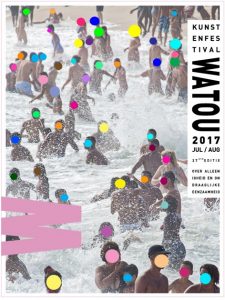In een onbeduidend hoekje van West-Vlaanderen vindt sinds 1980 elke zomer een Kunstenfestival plaats. Het ruikt er naar hop en een groeiend aantal bezoekers komt uit Nederland. Wat is het geheim van Watou?
Hoe komt een gat van 2000 inwoners, dat met moeite op je autonavigatie verschijnt, in hemelsnaam aan een Kunstenfestival dat jaarlijks twee hele zomermaanden het dorp regeert?
Watou ligt aan het einde van de Vlaamse wereld, in de Westhoek, een gekneusde regio in West-Vlaanderen, aanschurkend tegen de Franse grens. Je rijdt erheen door een omgeving bezaaid met littekens uit De Groote Oorlog. Langs rijen hopstaken, lage huizen met doorgezakte daken en heel veel witte kruizen. Watou is niet meer dan een paar straten rond een plein met een kerk. Er zijn een paar cafés, een handvol restaurants en het ruikt er naar hop en kunst. Op het centrale plein staat schrijver Hugo Claus, uitgeknipt in metaal.
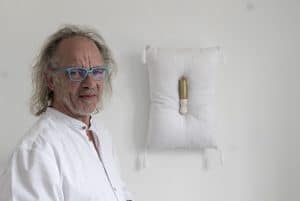
De heraut van Watou
Toen ik drie jaar geleden Jan Moeyaert sprak, de ‘intendant’ van het Kunstenfestival Watou, droeg hij een rode bril. Nu een blauwe. Verder is hij niets veranderd. Jan is nog immer de gepassioneerde producer, organisator en heraut van ‘Watou’. Als ik begin juli op het Markplein van Watou uit mijn auto stap zit Jan Moeyaert met een glas witte wijn en een sigaret op het terras van restaurant ’t Hommelhof, alsof hij nooit is weggeweest.Het voelt als Groundhog Day, de ‘tijdlusfilm’ met Bill Murray en Andie MacDowell, die elke keer weer opnieuw begint.
Moeyaert (62) is een mooie pluizige man met een romantisch kunstenaarshoofd, die met zacht-gruizige stem poëtische volzinnen uitspreekt. Hij komt uit een Brugs gezin van liefst zeven jongens. De jongste is de bekendste: Bart Moeyaert, de veelbekroonde schrijver/dichter, geboren in 1964. Jan was de derde in het gezin.
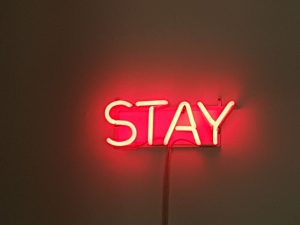 Kunstenfestival Watou startte in 1980 als een klein gedichtenfestival. In 2008 nam Jan Moeyaert het festival over en bouwde het, de laatste jaren samen met dochter Lieselotte, zoetjesaan uit tot een jaarlijkse happening vol beeldende kunst, optredens en lezingen. Elk jaar, twee lange zomermaanden, aan een stuk door. Met een geweldige Festivalkrant en een opmerkelijk professionele catalogus vol beelden, bio’s, verhalen, poëzie en songteksten (van, dit jaar, Jacques Brel). Waarlijk een prestatie.
Kunstenfestival Watou startte in 1980 als een klein gedichtenfestival. In 2008 nam Jan Moeyaert het festival over en bouwde het, de laatste jaren samen met dochter Lieselotte, zoetjesaan uit tot een jaarlijkse happening vol beeldende kunst, optredens en lezingen. Elk jaar, twee lange zomermaanden, aan een stuk door. Met een geweldige Festivalkrant en een opmerkelijk professionele catalogus vol beelden, bio’s, verhalen, poëzie en songteksten (van, dit jaar, Jacques Brel). Waarlijk een prestatie.
Alleen en eenzaam
Het overkoepelend thema van deze – alweer – 37ste editie van Kunstenfestival Watou is ‘alleenigheid en ondraaglijke eenzaamheid’.
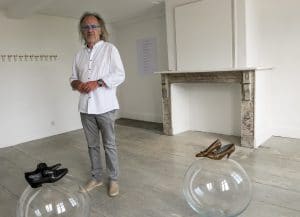
Jan Moeyaert: ‘Het uitgangspunt is elk jaar een aspect van ‘la condition humaine’, het wrange lot van de mensheid.
‘Wij zijn prutsers, fragiele wezens, ‘there is a crack in everything’. Als wezen staan we in een wereld van alleenigheid.’ Leidend motief van deze editie is een advies van Albert Einstein: ‘Be a loner. That gives you time to wonder, to search for the truth.’
Moeyaert: ‘Kunstenaars nemen deze uitspraak van Einstein dikwijls ter harte. Ze nemen tijd om de mensen en de dingen te observeren. Ze staan aandachtig en onderzoekend in het leven en vertellen daarover. Hun verhalen verbinden en genezen ons.’
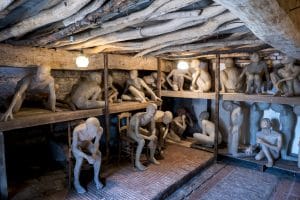
In de festivalkrant verwijst Jan naar een ‘beklijvende oneliner’ van de Belgische auteur Gerard Walschap: ‘De mens ge raakt daar niet aan uit.’Ofwel, vertaalt Jan Moeyaert: ‘Het is moeilijk om iemand door te hebben.’
Kerk, kroeg en schuur
Festival Watou gaat aldus. Je koopt bij de ‘onthaal’ op het Watouplein een passepartout voor 15 euro. Vervolgens ga je met je knipkaart alle tien locaties af (je mag er overigens ook twee maanden over doen en elke week terugkomen). Alle locaties bevinden zich op wandelafstand van het Marktplein van Watou.
De installaties, schilderijen, films en gedichten hangen, draaien of staan in het Festivalhuis, het Huisje Vijfhoekstraat, de Kasteeltuin, de Douviehoeve, de Graanschuur, het Parochiehuisje, het Klooster, de Sint-Baafskerk aan het Watouplein en de kelder van de oude brouwerij Van Eecke, van het beroemde Hommelbier.
Er zijn installaties bij die niet zouden misstaan op de Biënnale van Venetië.
Het mooiste is door het dorp wandelen, van locatie naar locatie. Op den duur ga je anders kijken. Die veertien harken met die ladder tegen de schuur van het huis naast Locatie 7, hóórt dat nou bij het festival? Alles vloeit in elkaar over. In de vervreemdende omgeving van eenvoud, streekbieren en oorlogsherinneringen van de Westhoek – waar je normaal niets te zoeken hebt – krijgt alles een andere waarde en betekenis.
Nederlandse kunstenaars
‘Watou’ kent een internationale bezetting, maar Jan Moeyaert heeft door jaren een groot en warm oog voor Nederlandse kunstenaars ontwikkeld. Jan: ‘Nederlandse kunstenaars participeren, ze hebben branie. Dat komt ook door het Nederlandse onderwijs waar je meer individu kunt zijn. Elke keer als ik in Nederland kom leer ik weer bij, ze soigneren daar meer.’
Op diverse locaties vind je dit jaar bijdragen van Nederlandse kunstenaars als Caspar Berger, Rince de Jong, Elaine Vis, Jan Henderikse, Mark Manders, Daan den Houter, Floris Kaayk en Henk Visch.

Welke locaties moet je vooral niet missen?
Moeyaert: ‘Watou mag je in totaliteit niet missen. Maar als ik moet kiezen zou ik Krištof Kintera met de Lightman voorop stellen. Ben ook blij met Chad Wright in de Douviehoeve. Een installatie van 900 kleine zandhuisjes die iets te vertellen hebben. En Mark Manders, een topkunstenaar die graag in een heel klein huisje in de Vijfhoekstraat wilde exposeren. Maar ook Javier Pérez, Hans Op de Beeck… er zijn heel wat mooie werken van internationale kunstenaars.
’24 duizend is mooi’
Hoeveel Nederlandse bezoekers verwachten jullie?
‘Ik reken op zo’n dertig procent Nederlanders. Voor Nederlanders is afstand geen probleem als ze iets willen zien. Ze stappen gewoon in de auto en maken er een leuk weekend van. De gemiddelde Belg staat op maximaal dertig minuten rijden, zelfs vanaf Antwerpen naar hier vindt hij al ver. In België is een harde kern van 30.000 mensen die in kunst is geïnteresseerd, daar kun je geen festival van draaien.’
Het aantal bezoekers aan Watou groeit gestaag. Jan Moeyaert: ‘Toen ik in 2008 het festival overnam waren er 5600 bezoekers. In 2015 hadden we er 18.000 en in 2016 was er ineens de sprong naar 24.000 bezoekers.
‘24.000 is mooi. Watou moet intiem zijn, het moet rustig en onthaastend blijven. We mogen nog wel iets groeien maar niet teveel. We zouden dan ook meer locaties nodig hebben.
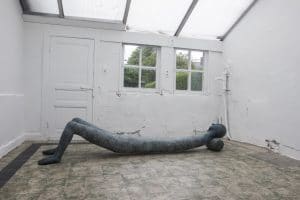
Staan ze in Watou onderhand niet in de rij om locaties te mogen leveren?
‘Nou, het is de Westhoek hier hè. Economisch sober, mensen willen er wel wat aan kunnen verdienen. Dit jaar zijn we 54.000 kwijt aan locatiehuur. ‘Gelukkig komen de kunstenaars hier ook niet voor het grote geld. Ze vinden het hier leuk en aangenaam. Het festival is ook bijzonder. Hier is het niet museaal of plechtig. Watou is een merk geworden. Dit dorp heeft geen drempel.
Dochter Lieselotte geeft een voorbeeld: ‘Er was een stel uit België, die zeiden na het bezoek: ‘Ik heb er niks van verstaan, maar het was prachtig. Dat moet kunnen. We leggen geen denkrichting op.’
Jan: ‘Ik ben een verhalenverteller. Maar ik wil geen intellectueel verhaal vertellen. We mikken op een breder publiek. We hebben in de zomer ook een kinderparcours.
Hij zucht: ‘Ja, je mag zeggen dat we geobsedeerd zijn door het festival.’
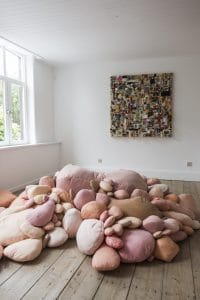
Bourgondisch dorp
We offeren nog een vooroordeel. In Watou ben je voor de maaltijd niet aangewezen op een croque-monsieur. Watou is een bourgondisch dorp. Restaurant ’t Hommelhof, de hoofdsponsor, is gevierd om zijn biergastronomie. Eigenaar Stefaan Couttenye is een Vlaams fenomeen. Couttenye: ‘Het festival en mijn restaurant hebben elkaar groot helpen worden.’
Op warme festivalavonden zitten kunstenaars en bezoekers tot in de kleine uurtjes naast elkaar op de terrassen van het Watouplein. Met een Hommel of St. Bernardus Prior 8 (van die ándere brouwerij in Watou) voor hun neus.
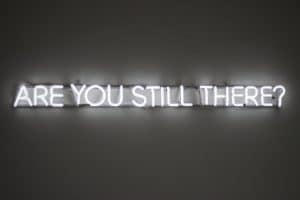
1 juli tot en met 3 september, van
woensdag tot zondag, 11u tot 19u. In het weekend zijn er optredens. Prijs: € 15. € 10 voor jongeren tot 25 jaar,
gratis voor kinderen tot 12. Adres: Watouplein 12, 8978 Watou, Poperinge (België). De kassa bevindt zich in het Festivalhuis (Watouplein 12), op het marktplein naast de Spar.
Watou ligt op drie uur rijden van Utrecht (277 km). Zie verder kunstenfestivalwatou.be
